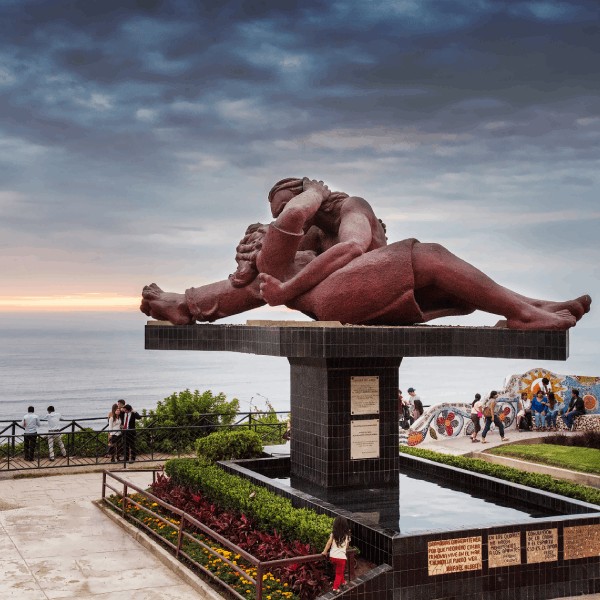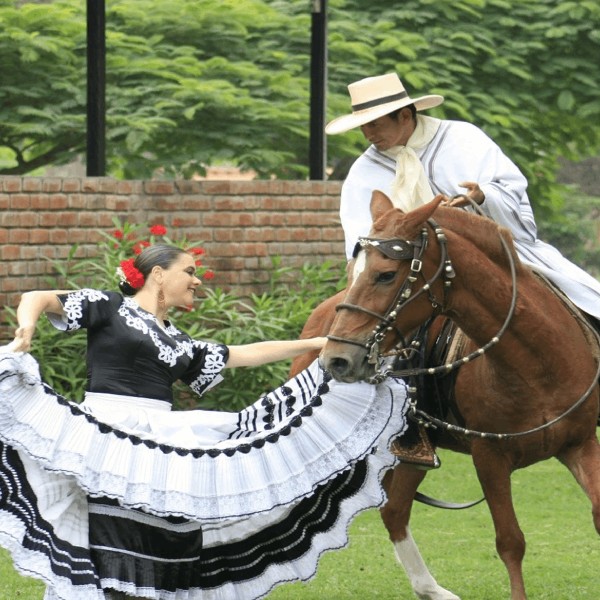 Location:
Lima is located on the central coast of the country, on the shores of the Pacific Ocean. Its 4,802 km2 extend from Callao, with the Pacific Ocean to the west, to Chosica to the east, from Ancón to the north to Lurín to the south.
Location:
Lima is located on the central coast of the country, on the shores of the Pacific Ocean. Its 4,802 km2 extend from Callao, with the Pacific Ocean to the west, to Chosica to the east, from Ancón to the north to Lurín to the south.
Altitude:
The altitude of the city of Lima, Peru, is approximately 155 meters above sea level.
Climate:
Lima’s climate is the result of its location. Combined with an almost complete absence of precipitation, a very high degree of atmospheric humidity, and persistent cloudiness, it gives Lima a humid subtropical, cool, and desert climate.
Best time to visit:
To travel to Lima and the entire Peruvian coast, the best time is from October to April, with sunny days and the city free from the fog that covers it almost all year round.
Lima has one of the best airports and seaports in Peru, as well as overland transportation. It is the main center for international, national, and bus flights in the country. If you are planning to visit this wonderful city, here are some options for getting to Lima:
By Air:
Lima is located on the central coast of the country, on the edge of the Pacific Ocean. It covers 4,802 km2, extending from Callao, with the Pacific Ocean to the west, to Chosica in the east, from Ancón in the north to Lurín in the south.
By Land:
Lima has an excellent road network connecting it to other Peruvian cities. If you are in a nearby city, you can choose to travel by bus or car. Bus services are frequent and offer various options in terms of price and comfort. If you prefer to drive, you can rent a car and enjoy the scenery along the way.
By Sea:
If you are traveling by cruise, your itinerary may include a stop at the port of Callao, located near Lima. From there, you can take ground transportation to the city center and explore the charms of Lima.
 Like the majority of cities in Peru, Lima has different attractions to enjoy; the following are the most outstanding ones:
Like the majority of cities in Peru, Lima has different attractions to enjoy; the following are the most outstanding ones:
Historic Center of Lima: Area of the city encompassing the districts of Lima and Rímac. Declared a World Heritage Site in 1988, it is considered one of the most important tourist centers in Peru.
Magic Water Circuit: Located in Lima’s Reserve Park, it is one of the city’s new attractions and features 13 ornamental fountains that combine water, music, and laser lights.
Miraflores Malecón: A large green area located in the Miraflores district. It has several parks: María Reiche, Tres Picos, Miguel Grau, the Parque del Amor, Parque Salazar.
Larco Museum: Created by Rafael Larco Hoyle when he began collecting pre-Columbian pieces. The museum has thousands of pieces depicting over 3,000 years of indigenous civilizations’ history.
Church of San Francisco de Asís: One of the most representative religious centers in Lima. It has catacombs where the remains of over 25,000 people are located. This church is in the architectural center of Lima.
 Here are some important festivities in the city of Lima:
Here are some important festivities in the city of Lima:
Lima Anniversary: Founded on January 18, 1535, by the Spanish conqueror Francisco Pizarro. On this date, its anniversary is celebrated with various civic, cultural, and artistic activities.
National Paso Horse Contest:Held near the archaeological site of Pachacamac. This contest is attended by the main breeders of the famous horse.
National Holidays: Ica celebrates its anniversary as a city. On this date, civic parades, cultural activities, sports events, and competitions are held.
Feast of Santa Rosa de Lima: A religious celebration commemorating Saint Rose of Lima. Every year, processions and a large pilgrimage of thousands of devotees take place at the church and sanctuary of Santa Rosa.
Lord of Miracles Feast: The most traditional and devotional festival in Peru. Hundreds of thousands of devotees participate in processions on the 18th, 19th, and 29th. The faithful usually wear a purple habit.
 Lima is known as the gastronomic capital of Latin America due to its culinary heritage of magnificent pre-Hispanic cooking traditions, which nourish the best Eastern and Western cuisine.
Lima is known as the gastronomic capital of Latin America due to its culinary heritage of magnificent pre-Hispanic cooking traditions, which nourish the best Eastern and Western cuisine.
Ceviche: One of the most popular Peruvian dishes. It is made with small pieces of fish cooked in lime juice, accompanied by chili pepper, onion, lettuce leaves, yuyos, choclo (corn), and cooked potatoes served on a cold plate. When pieces of shellfish and crustaceans are added, it is called ceviche misto.
Anticuchos:Another typical Peruvian dish made with pieces of beef heart, marinated in vinegar and spices, bathed in sugar and placed on a skewer. They are grilled and served with potatoes cooked in ají sauce.
Limean Carapulcra:: A variety of carapulcra chinchana, made with dried potatoes, pork, and chicken, ají, garlic, cloves, olives, roasted corn, cumin, onion, and mild wine. It is served with fluffy rice.
Mazamorra Morada: The most traditional dessert in Lima made with sugar, cloves, and cinnamon. Its fame and tradition throughout Peru make “mazamorrero” synonymous with Limean gentility.
Suspiro Limeña: A delicious sweet made with manjar blanco (dulce de leche), covered with cane sugar, port wine, and meringue.

 Location:
Location: Like the majority of cities in Peru, Lima has different attractions to enjoy; the following are the most outstanding ones:
Like the majority of cities in Peru, Lima has different attractions to enjoy; the following are the most outstanding ones: Here are some important festivities in the city of Lima:
Here are some important festivities in the city of Lima: Lima is known as the gastronomic capital of Latin America due to its culinary heritage of magnificent pre-Hispanic cooking traditions, which nourish the best Eastern and Western cuisine.
Lima is known as the gastronomic capital of Latin America due to its culinary heritage of magnificent pre-Hispanic cooking traditions, which nourish the best Eastern and Western cuisine.